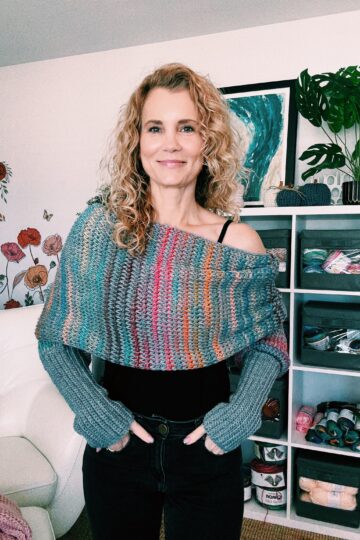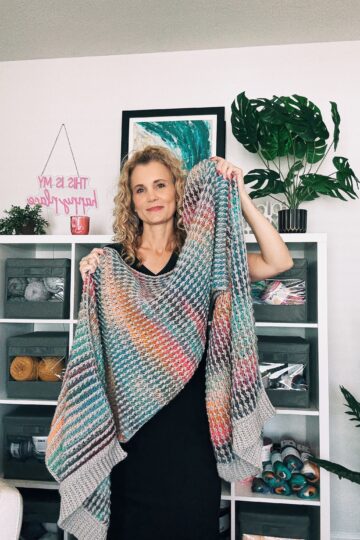Tunisian crochet can be a bit of a diva when you're first starting out, am I right?

I remember my first attempt at Tunisian Simple Stitch. I was so excited to try this beautiful technique that creates such gorgeous, dense fabric. But after a few rows, my project looked like a tube and a messy one at that!
Curled edges, dropped stitches, and tension that was all over the place.
If you're like me and you've fallen in love with the idea of Tunisian crochet but keep running into frustrating roadblocks, you're definitely not alone.
Here's what I've learned about the most common mistakes (and trust me, I've made them all!).
1. The Dreaded Curling Fabric
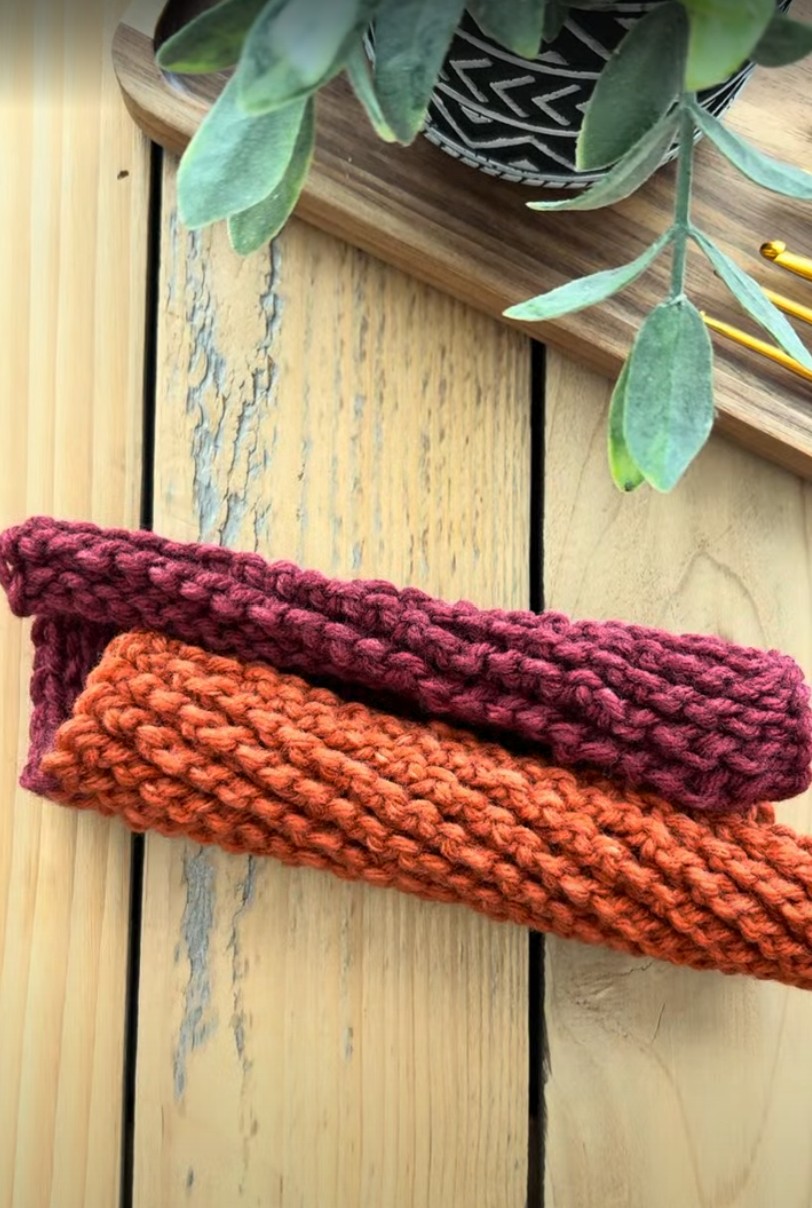
This one's a no-brainer for the most annoying Tunisian crochet problem!
Your beautiful fabric starts curling up like it's trying to become a burrito. I learned that one the hard way when I made my first Tunisian scarf and it literally wouldn't lay flat no matter what I did.
Here's what works for me:
- Use a hook that's 1-2 sizes larger than you think you need
- Block your finished project (steam blocking is my personal favorite!)
- Add border rows using Tunisian Reverse Stitch—it's a game-changer for balancing tension
- Start with a foundation row of regular single crochet for extra flexibility
Pro tip: Check out our Tame the Curl Tunisian crochet pattern bundle, which includes 5 patterns and 5 ways to tame that curl.
2. Playing Hide and Seek with Vertical Bars
If you're missing vertical bars or accidentally working into the same one twice, you'll end up with holes that definitely weren't part of the pattern.
When I first started, I would count all the loops on my hook after the Forward Pass. It might seem like overkill (especially for a blanket!), but trust me on this one—it saves so much frustration later.
My go-to fixes:
- Slow down and count loops after each forward pass (I know, I know, but it helps!)
- Remember that last stitch needs to go under BOTH side legs of the final vertical bar
- Practice identifying where exactly that vertical bar is before you commit
The best part about counting those loops? You catch mistakes before they become disasters.
3. Tension That's All Over the Place
Some of your stitches are tight, others are loose, and your fabric looks like it can't decide what it wants to be when it grows up.
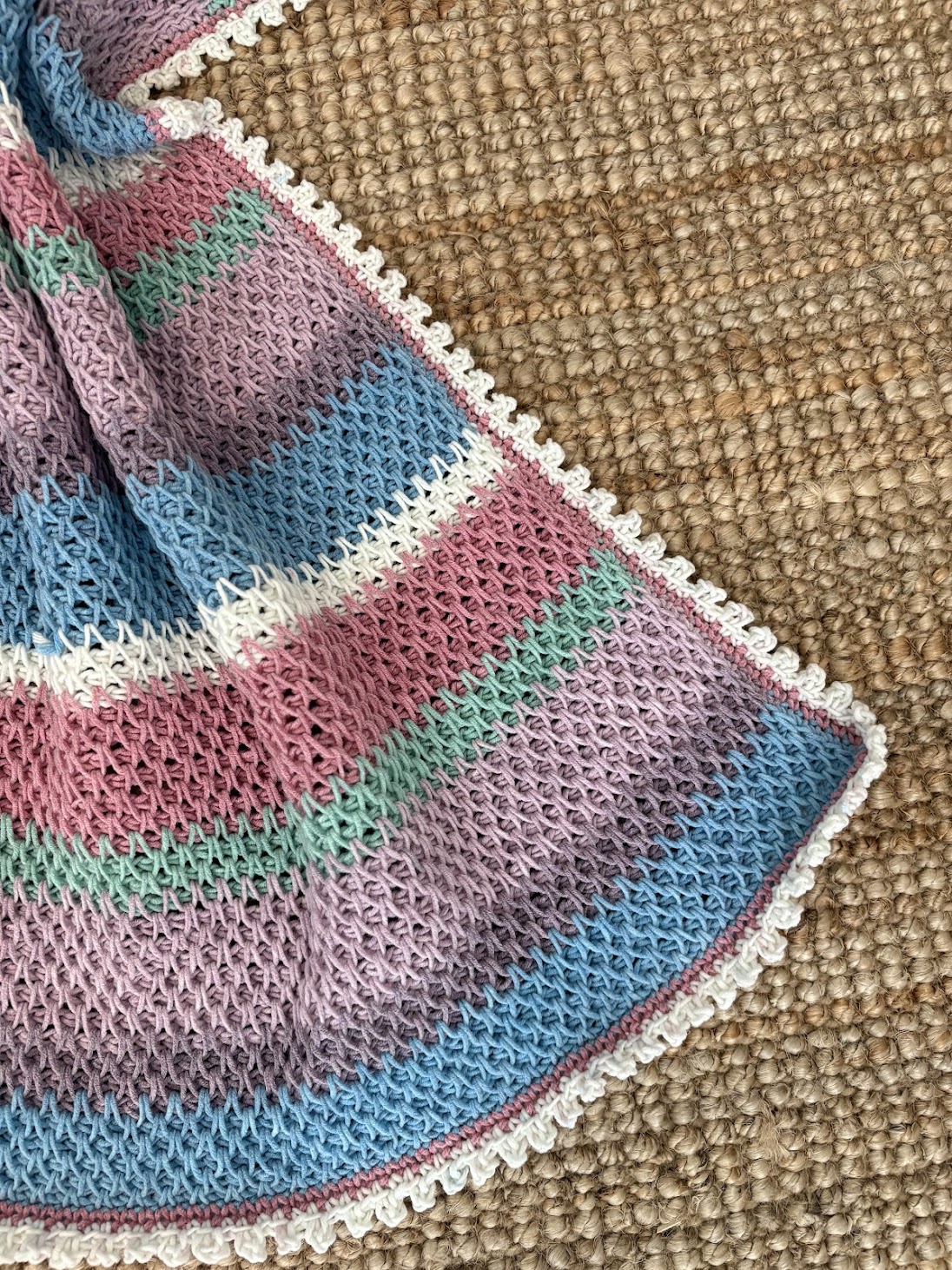
This might sound unusual, but hear me out—I actually had to relearn how to hold my yarn when I started Tunisian crochet. The technique is just different enough that my regular crochet muscle memory wasn't cutting it.
What I love doing now:
- Keep my hook horizontal and level (no tilting!)
- Relax my yarn hand—seriously, loosen that death grip
- Practice with swatches in different stitch types to build new muscle memory
4. The Vanishing Last Stitch
Your rows keep getting shorter and your project starts looking like it's melting off to one side.
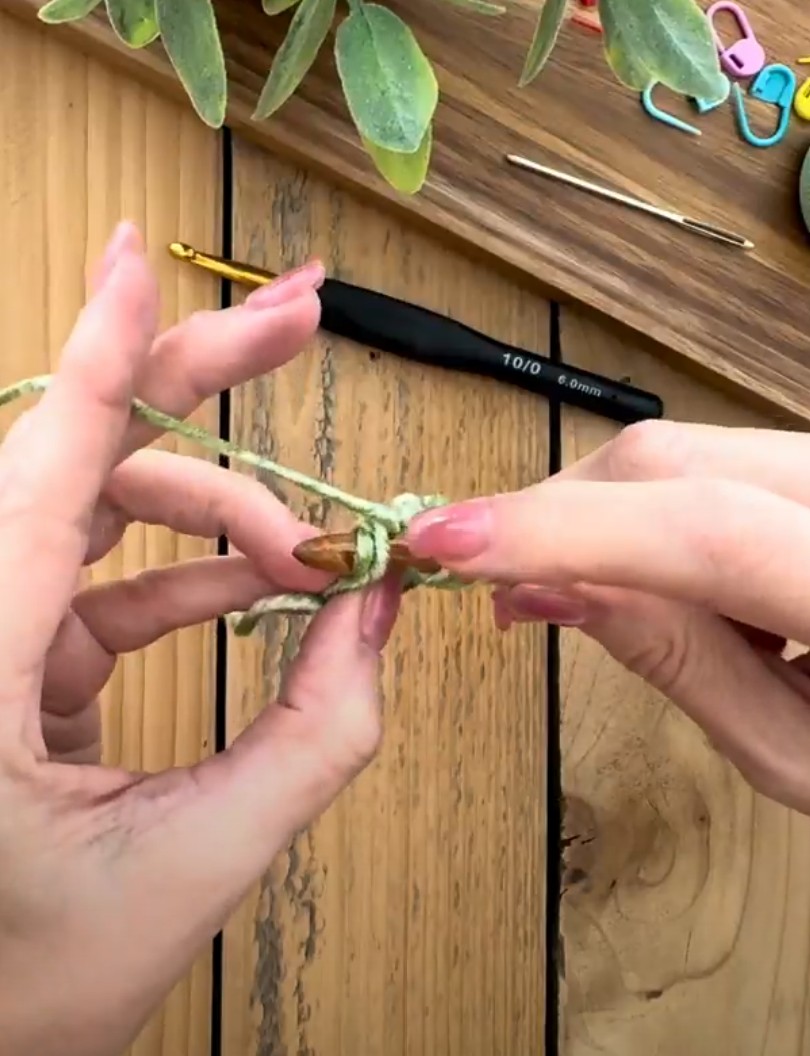
If you're like me, you probably got so focused on mastering the forward pass that you started treating that last stitch like an afterthought. Big mistake!
Here's what I learned:
- Count your stitches religiously (same count every row unless you're shaping)
- That last stitch goes under both bars on the side (like pictured above)
- Use a stitch marker on that last stitch until it becomes second nature
5. Rushing Through the Return Pass
Let me share something I discovered the hard way—the return pass is just as important as the forward pass, but it's so easy to get sloppy with it.
I used to zoom through the return pass like it was just busy work. Then I realized my fabric looked uneven, and I couldn't figure out why!
The basic Tunisian return pass goes like this:
- Yarn over, pull through 1 (that's your start)
- Then yarn over, pull through 2 for everything else
6. Skipping the Swatch (We've All Been There!)
You see a gorgeous Tunisian pattern and jump straight in without checking gauge. Then your sweater fits like a cardboard box or your blanket could double as a tarp.
I've learned that Tunisian crochet creates much denser fabric than regular crochet, so everything behaves differently.
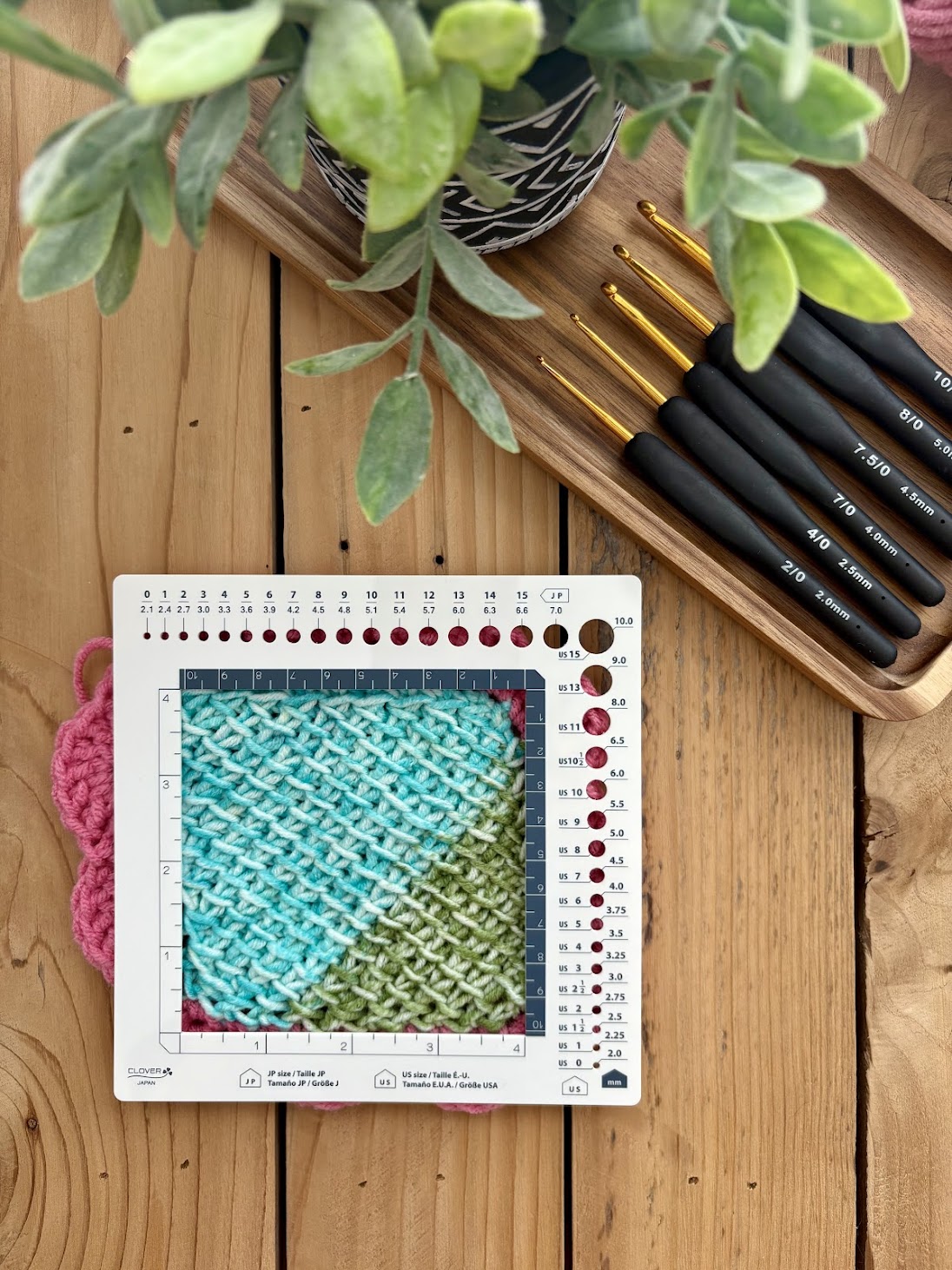
My swatch strategy now:
- Always, always swatch for garments (learned this one the hard way!)
- Adjust hook size to get the right drape, not just the right measurements
- Natural fibers or blends are your friends—they block and stretch beautifully
7. Choosing Yarn That Fights You
This is a big one! Because Tunisian crochet creates such dense fabric, the wrong yarn choice can make your project feel like armor instead of something cozy.
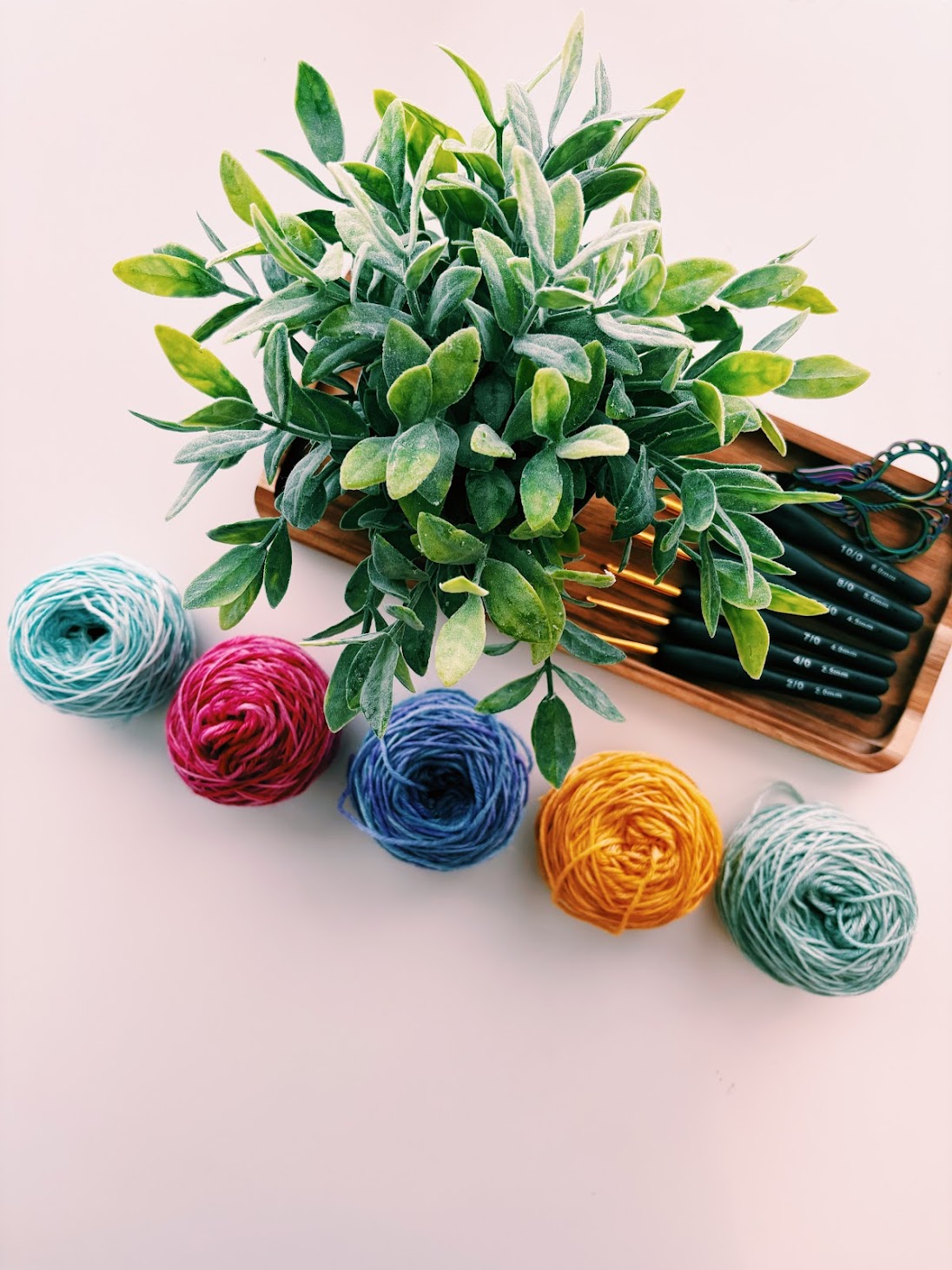
I remember using a super stiff acrylic for my first Tunisian blanket. It was technically the right weight, but the finished project was so rigid I could probably have used it as a table mat!
What I reach for now:
- Soft, drapey yarns like bamboo, cotton blends, or wool blends
- Anything with a little bit of natural stretch
- When in doubt, I make a small test square to feel how the fabric behaves
Ready to Try Something New?
Here's what I love about Tunisian crochet mistakes—they're all totally fixable, and most of them become second nature once you know what to watch for.
Every single crocheter goes through this learning curve. I promise you, that frustrating curling project you're working on right now? It's not a sign to give up—it's just part of the journey to mastering this gorgeous technique.
The best part is that once you get the hang of these basics, Tunisian crochet becomes incredibly meditative and rewarding. Plus, the fabric it creates is just stunning!
Looking for more crochet inspiration and tips? Follow us on Instagram, Pinterest, and YouTube for daily pattern ideas and tips! And if you're ready to tackle your first Tunisian project, check out our collection of beginner-friendly Tunisian patterns.


